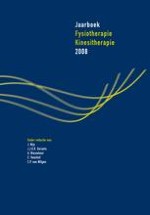Samenvatting
Mensen met diabetes en diabetische polyneuropathie lijken een ander looppatroon te hebben en hebben vaak ook minder spierkracht dan hun gezonde leeftijdsgenoten. Hierdoor lopen ze niet alleen langzamer, maar ook anders: de momenten en krachten rond heup-, knie- en enkelgewricht veranderen en dit heeft gevolgen voor de voetdrukken. Deze theoretische veronderstelling is onderzocht door bij mensen met diabetes, mensen met diabetisch polyneuropathie en gezonde leeftijdsgenoten de kracht in de onderbeenspieren, het looppatroon en het voetdrukpatroon in kaart te brengen. Mensen met diabetes of met diabetisch polyneuropathie blijken minder sterke onderbeenspieren te hebben dan hun gezonde leeftijdsgenoten. Significante veranderingen in het looppatroon en het voetdrukpatroon treden alleen op bij mensen met diabetische polyneuropathie. Het verlies van kracht in de onderbeenspieren alleen is hiervoor onvoldoende voorwaarde en het lijkt erop dat bij diabetische polyneuropathie ook de kniestrekkers zijn aangedaan.
Het onderzoek laat zien dat het verlies van spierkracht een rol kan spelen bij veranderingen die optreden in het looppatroon bij mensen met diabetes, met name bij diabetische polyneuropathie. Dergelijke veranderingen dragen bij aan het verschuiven van de voetdruk en spelen daardoor een rol bij het ontstaan van voetulcera. Toekomstig onderzoek moet uitwijzen of door gerichte krachttraining spierkrachtverlies bij mensen met diabetes tegengegaan kan worden en of daarmee het risico op drukwonden en de afname van mobiliteit verkleind kan worden.
